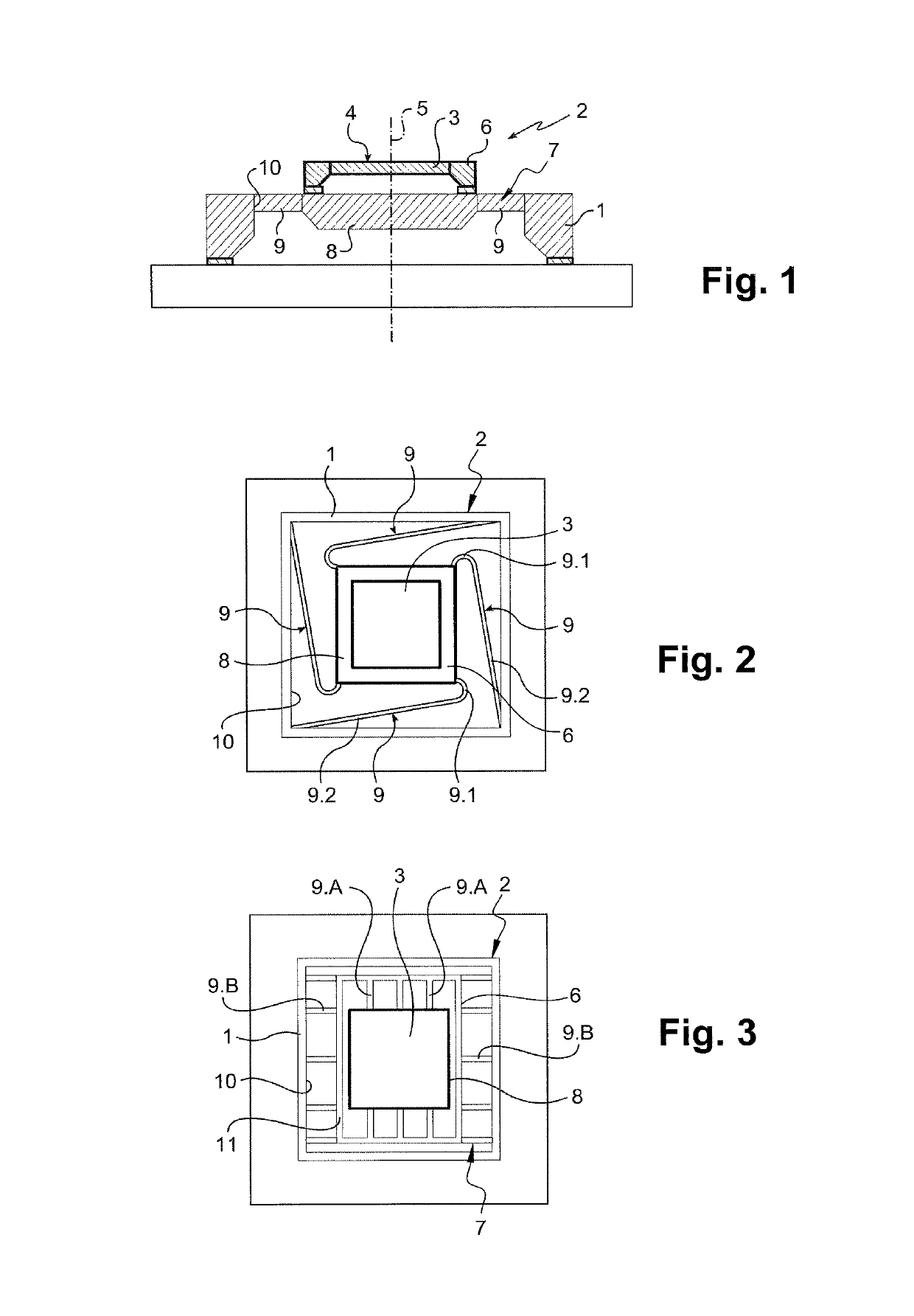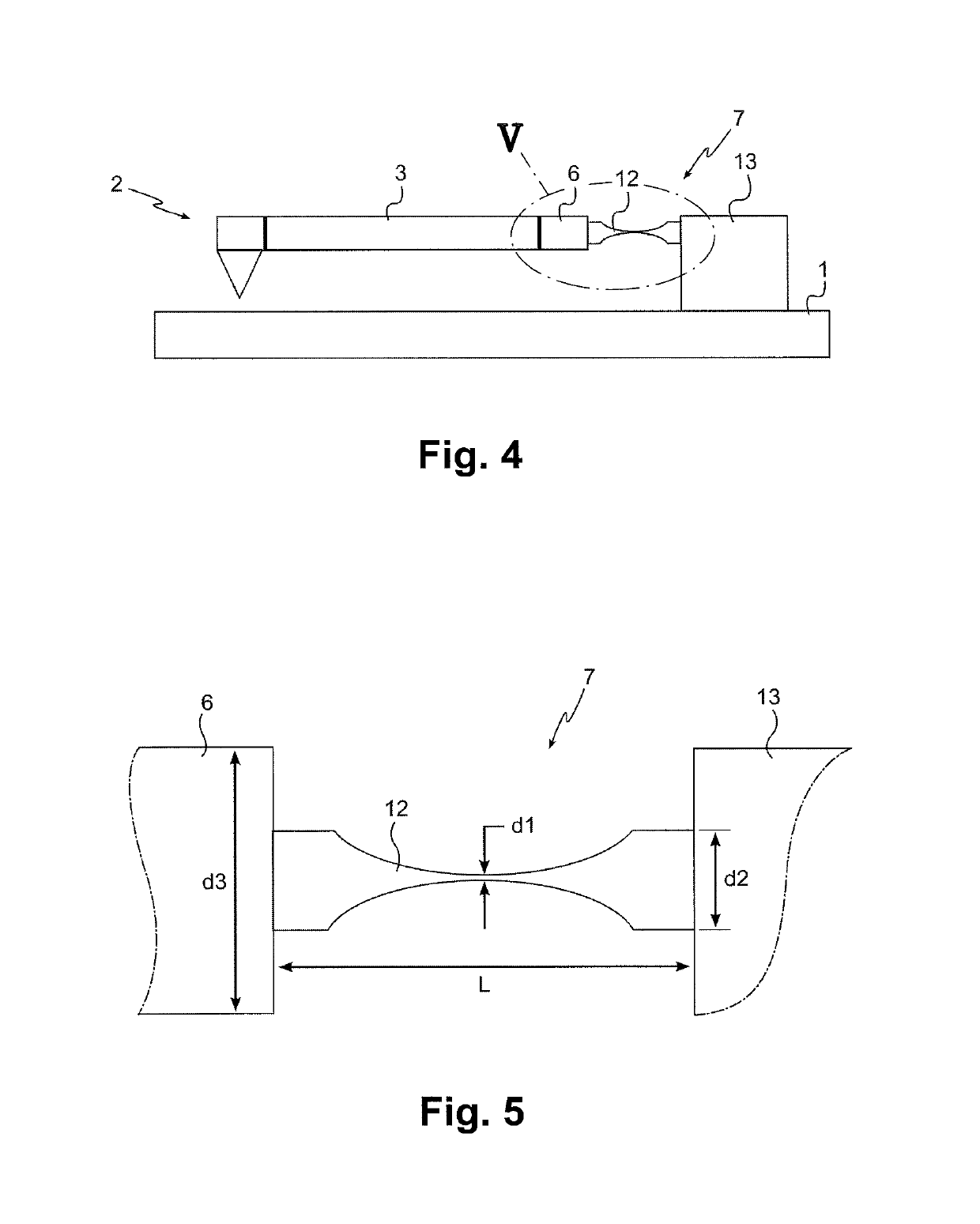Device for detecting mechanical decoupling pressure
a technology of mechanical decoupling and pressure detection, which is applied in the direction of measurement devices, instruments, surveying and navigation, etc., can solve the problems of biasing the pressure measurement, temperature influence, stress on the deformation of the membrane, etc., and achieves the effects of preventing differential thermal expansion, limiting the effect of differential thermal expansion, and adding flexibility
- Summary
- Abstract
- Description
- Claims
- Application Information
AI Technical Summary
Benefits of technology
Problems solved by technology
Method used
Image
Examples
first embodiment
[0021] shown in FIGS. 1 to 3, the decoupling structure 7 comprises a plate 8 integral with the frame 6 and arms 9 extending between the plate 8 and the mount 1. The plate 8, the membrane 3 and the frame 6 are made of the same material. The arms 9 are elastically deformable so as to transform any differential thermal expansion between the mount 1 and the plate 8 into a resulting movement parallel to the mid-plane.
[0022]More precisely here, the plate 8 has a substantially rectangular perimeter and is accommodated in a recess 10 of the mount 1 having a rectangular perimeter, with the arms 9 connecting the perimeter of the plate 8 with the wall of the recess 10.
[0023]Referring to FIG. 2, the arms 9 have a curved portion 9.1 connected with the plate 8 and a straight portion 9.2 connected with the mount 1.
[0024]The curved portions 9.1 are curved in the same direction. The curved portion 9.1 of each arm 9 is integral with the plate 8 in the vicinity of one of the corners of the plate 8.
[00...
second embodiment
[0030]The elements identical with or similar to those previously described will bear reference numbers identical therewith in the following description of a second embodiment relating to FIG. 4.
[0031]In this embodiment, the decoupling structure 7 comprises a block 13 integral with the mount 1 and connected through a connection 12 to one side only of the frame 6, with the connection being so arranged that the frame extends in a cantilevered position relative to the mount 1.
[0032]The device is so arranged that the assembly consisting of the elements 2, 3, 6, 7 is made of materials having the same nature as the sensitive element, so as not to introduce any difference in the expansion between the sensitive element and the decoupling structure 7. The sensitive element can thus be assembled onto the decoupling structure 7 in a completely rigid way.
[0033]Such decoupling method is more particularly adapted to sensitive elements made of silicon, and of silicon alloy (silicon carbide, silicon...
PUM
| Property | Measurement | Unit |
|---|---|---|
| pressure | aaaaa | aaaaa |
| stress | aaaaa | aaaaa |
| thermal expansion | aaaaa | aaaaa |
Abstract
Description
Claims
Application Information
 Login to View More
Login to View More - R&D
- Intellectual Property
- Life Sciences
- Materials
- Tech Scout
- Unparalleled Data Quality
- Higher Quality Content
- 60% Fewer Hallucinations
Browse by: Latest US Patents, China's latest patents, Technical Efficacy Thesaurus, Application Domain, Technology Topic, Popular Technical Reports.
© 2025 PatSnap. All rights reserved.Legal|Privacy policy|Modern Slavery Act Transparency Statement|Sitemap|About US| Contact US: help@patsnap.com


